LA Johnson in NPR:
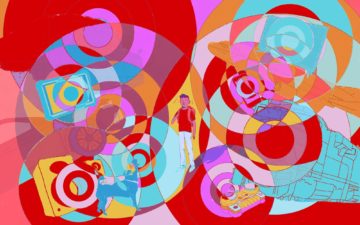 A group of small children sits cross-legged with their teacher, Steve Mejía-Menendez, on a round carpet. He’s a pre-K teacher at Lee Montessori Public Charter School’s campus in Southeast Washington, D.C., and although I’m here to meet him, I almost don’t spot him because he’s eye level with his students.
A group of small children sits cross-legged with their teacher, Steve Mejía-Menendez, on a round carpet. He’s a pre-K teacher at Lee Montessori Public Charter School’s campus in Southeast Washington, D.C., and although I’m here to meet him, I almost don’t spot him because he’s eye level with his students.
Mr. Steve, as he’s known here, is talking a few students through a geometry lesson when another student approaches to ask an unrelated question. This kind of distraction happens all the time in classrooms around the United States. Mr. Steve doesn’t lose focus. He uses American Sign Language to say “wait” — palms facing up, fingers wiggling — and the child waits quietly. When the lesson arrives at a natural stopping point, the student is invited to ask his question, and Mr. Steve silently responds by nodding his head along with his fist, which is sign language for “yes.”
Blink, and you could miss the whole interaction.
This isn’t a school for students with hearing disabilities, but Mr. Steve uses ASL as part of a broader approach to minimize noise in the classroom. And it’s noticeably quiet. No one is talking louder than what’s often referred to in Montessori schools as “the hum.”
More here.

 There is a mental-health crisis in science — at all career stages and across the world. Graduate students are being
There is a mental-health crisis in science — at all career stages and across the world. Graduate students are being  There was no immediate indication of who might have created this amazing dress diary, as I called it—of who had spent so much time carefully arranging the pieces of wool, silk, cotton, and lace into a document of lives in cloth. While there was much I was uncertain of, however, one thing I knew for sure from the careful handwriting that arched over each piece of cloth: this was the work of one woman. I just didn’t know who she was.
There was no immediate indication of who might have created this amazing dress diary, as I called it—of who had spent so much time carefully arranging the pieces of wool, silk, cotton, and lace into a document of lives in cloth. While there was much I was uncertain of, however, one thing I knew for sure from the careful handwriting that arched over each piece of cloth: this was the work of one woman. I just didn’t know who she was.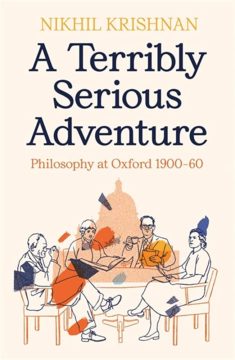 Austin died in 1960, at the age of 48, and Krishnan sees this as the end of ordinary language philosophy. Metaphysical ambition – though still in the form of conceptual analysis – was exemplified by Strawson, who examined the basic structure of the human world, including our concept of persons, in Individuals: An Essay in Descriptive Metaphysics (1959). Questions about the relation between mind and body had not been put to rest by Ryle; they remain wide open to this day. And moral and political theory flourished from the 1970s.
Austin died in 1960, at the age of 48, and Krishnan sees this as the end of ordinary language philosophy. Metaphysical ambition – though still in the form of conceptual analysis – was exemplified by Strawson, who examined the basic structure of the human world, including our concept of persons, in Individuals: An Essay in Descriptive Metaphysics (1959). Questions about the relation between mind and body had not been put to rest by Ryle; they remain wide open to this day. And moral and political theory flourished from the 1970s.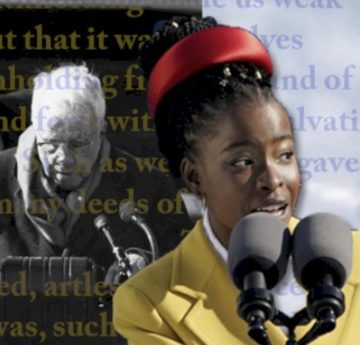 For many viewers, the highlight of Ken Burns’s documentary The Civil War is the reading of a poignant letter from a Union soldier to his wife a week before he is killed in the First Battle of Bull Run. “Sarah, my love for you is deathless,” Major Sullivan Ballou writes from his unit’s camp in Washington, DC. “It seems to bind me with mighty cables that nothing but Omnipotence can break; and yet, my love of country comes over me like a strong wind, and bears me irresistibly on with all those chains to the battlefield.” Concluding the series’ premiere episode in September 1990, the letter became the equivalent of a viral phenomenon in that pre-social media age: “Within minutes of the first night’s broadcast,” Burns said a year later, “the phone began ringing off the hook with calls from across the country, eager to find out about Sullivan Ballou….The calls would not stop all week—and they continue.” The letter still resonates today—Senator Chuck Schumer read an excerpt at Donald Trump’s inauguration—and in multiple articles turned up by a Google search, the word that recurs most frequently to praise it is “eloquent.”
For many viewers, the highlight of Ken Burns’s documentary The Civil War is the reading of a poignant letter from a Union soldier to his wife a week before he is killed in the First Battle of Bull Run. “Sarah, my love for you is deathless,” Major Sullivan Ballou writes from his unit’s camp in Washington, DC. “It seems to bind me with mighty cables that nothing but Omnipotence can break; and yet, my love of country comes over me like a strong wind, and bears me irresistibly on with all those chains to the battlefield.” Concluding the series’ premiere episode in September 1990, the letter became the equivalent of a viral phenomenon in that pre-social media age: “Within minutes of the first night’s broadcast,” Burns said a year later, “the phone began ringing off the hook with calls from across the country, eager to find out about Sullivan Ballou….The calls would not stop all week—and they continue.” The letter still resonates today—Senator Chuck Schumer read an excerpt at Donald Trump’s inauguration—and in multiple articles turned up by a Google search, the word that recurs most frequently to praise it is “eloquent.” The modern world is large and interconnected, and there are a lot of systems that might be important to how it functions but about which most people are barely aware. One of these is the offshore wealth management network, which wealthy individuals can use both legitimately (to invest and plan their money) and less legitimately (to avoid taxation or hide questionable practices generally). Brooke Harrington is a sociologist who has studied offshore wealth management, including by training to be one. In
The modern world is large and interconnected, and there are a lot of systems that might be important to how it functions but about which most people are barely aware. One of these is the offshore wealth management network, which wealthy individuals can use both legitimately (to invest and plan their money) and less legitimately (to avoid taxation or hide questionable practices generally). Brooke Harrington is a sociologist who has studied offshore wealth management, including by training to be one. In 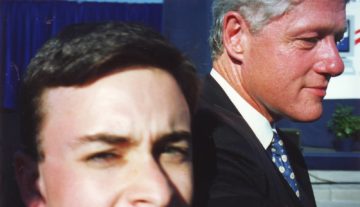 The 1970s and 1980s are usually seen as the transformative era of recent American political history. And if the 1970s saw a
The 1970s and 1980s are usually seen as the transformative era of recent American political history. And if the 1970s saw a  “Drop me down anywhere in America and I’ll tell you where I am: in America.” Perhaps you need to be a slight stranger to this country to formulate American ubiquity in this way—as comic tautology, as wry Q.E.D. Quite often, in the last twenty years, I’ve found myself driving along some strip development in Massachusetts or New York State, or Indiana or Nevada for that matter, and as the repetitive commercial furniture passes by—the Hampton Inn, the kindergarten pink-and-orange of Dunkin’ Donuts, Chick-fil-A’s chirpy red rooster—I’m suddenly seized by panic, because for a second I don’t know where I am. The placeless wallpaper keeps unfurling. And then Martin Amis’s sentence from his great early book of journalism, “
“Drop me down anywhere in America and I’ll tell you where I am: in America.” Perhaps you need to be a slight stranger to this country to formulate American ubiquity in this way—as comic tautology, as wry Q.E.D. Quite often, in the last twenty years, I’ve found myself driving along some strip development in Massachusetts or New York State, or Indiana or Nevada for that matter, and as the repetitive commercial furniture passes by—the Hampton Inn, the kindergarten pink-and-orange of Dunkin’ Donuts, Chick-fil-A’s chirpy red rooster—I’m suddenly seized by panic, because for a second I don’t know where I am. The placeless wallpaper keeps unfurling. And then Martin Amis’s sentence from his great early book of journalism, “ Imagine a physicist observing a quantum system whose behavior is akin to a coin toss: it could come up heads or tails. They perform the quantum coin toss and see heads. Could they be certain that their result was an objective, absolute and indisputable fact about the world? If the coin was simply the kind we see in our everyday experience, then the outcome of the toss would be the same for everyone: heads all around! But as with most things in quantum physics, the result of a quantum coin toss would be a much more complicated “It depends.” There are theoretically plausible scenarios in which another observer might find that the result of our physicist’s coin toss was tails.
Imagine a physicist observing a quantum system whose behavior is akin to a coin toss: it could come up heads or tails. They perform the quantum coin toss and see heads. Could they be certain that their result was an objective, absolute and indisputable fact about the world? If the coin was simply the kind we see in our everyday experience, then the outcome of the toss would be the same for everyone: heads all around! But as with most things in quantum physics, the result of a quantum coin toss would be a much more complicated “It depends.” There are theoretically plausible scenarios in which another observer might find that the result of our physicist’s coin toss was tails. Contemporary accounts suggest that Elsheimer was an attractive personality but ‘very solitary and contemplative’: walking through the streets, ‘he would be so caught up in thought that he would not say anything to anyone unless they spoke to him first’. He was also a perfectionist and an achingly slow worker, traits which led to his imprisonment for debt, since he could not bring himself to churn out works to satisfy his ready market. Incarceration did not spur greater productivity but exacerbated his pre-existing depression.
Contemporary accounts suggest that Elsheimer was an attractive personality but ‘very solitary and contemplative’: walking through the streets, ‘he would be so caught up in thought that he would not say anything to anyone unless they spoke to him first’. He was also a perfectionist and an achingly slow worker, traits which led to his imprisonment for debt, since he could not bring himself to churn out works to satisfy his ready market. Incarceration did not spur greater productivity but exacerbated his pre-existing depression.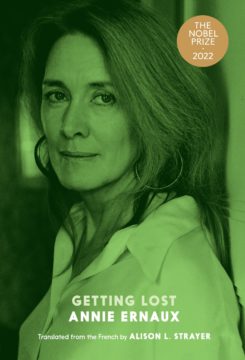 What a time to be reading about Annie Ernaux’s self-obliterating affair with S from the Soviet embassy in Paris, not that you’d sense that something’s in the air from the English-language reception to Getting Lost, Ernaux’s diary of the relationship, published in English last September. In the diary and in its generally admiring reviews S is described as a diplomat, apparatchik, attaché, ‘faithful servant of the USSR’ (Ernaux) and Brezhnev nostalgic/Stalin apologist when drunk. Also: ‘He is somewhat, not to say very, anti-Semitic: “Isn’t Mitterrand Jewish?” ’ Pretty standard stuff. Come on. He would have been KGB. And it matters not because he may or mayn’t have tried recruiting Ernaux – S kept their affair secret and appeared uninterested in converting her into an asset or using her connections (his anti-intellectualism was a turn-on for Ernaux). It’s possible in fact Ernaux was so erotically dazzling she shortcircuited, without realising, some good old planned sexual espionage (if so I’d like to read about it). She though wasn’t remotely intrigued by what S did when not with her: ‘I never knew anything about his activities, which, officially, were related to culture. Today, I am amazed that I did not ask more questions.’ Culture my arse. The KGB thing matters because an account of a prominent French writer, one of the greats to many, the most recent Nobel Prize winner losing her mind over a KGB stooge in the dying days of the Soviet Union reads, lands, sits, sticks, whatever the verb, differently after 24 February 2022.
What a time to be reading about Annie Ernaux’s self-obliterating affair with S from the Soviet embassy in Paris, not that you’d sense that something’s in the air from the English-language reception to Getting Lost, Ernaux’s diary of the relationship, published in English last September. In the diary and in its generally admiring reviews S is described as a diplomat, apparatchik, attaché, ‘faithful servant of the USSR’ (Ernaux) and Brezhnev nostalgic/Stalin apologist when drunk. Also: ‘He is somewhat, not to say very, anti-Semitic: “Isn’t Mitterrand Jewish?” ’ Pretty standard stuff. Come on. He would have been KGB. And it matters not because he may or mayn’t have tried recruiting Ernaux – S kept their affair secret and appeared uninterested in converting her into an asset or using her connections (his anti-intellectualism was a turn-on for Ernaux). It’s possible in fact Ernaux was so erotically dazzling she shortcircuited, without realising, some good old planned sexual espionage (if so I’d like to read about it). She though wasn’t remotely intrigued by what S did when not with her: ‘I never knew anything about his activities, which, officially, were related to culture. Today, I am amazed that I did not ask more questions.’ Culture my arse. The KGB thing matters because an account of a prominent French writer, one of the greats to many, the most recent Nobel Prize winner losing her mind over a KGB stooge in the dying days of the Soviet Union reads, lands, sits, sticks, whatever the verb, differently after 24 February 2022. Life expectancy fell in the United States in 2021 for the
Life expectancy fell in the United States in 2021 for the  WHAT MIGHT DONALD RUMSFELD have in common with Frederick Barbarossa, Mormons, and Queen Elizabeth I’s rotting teeth? The answer is simpler than you might expect: the power and influence of sugar, a crystalline specimen of world-historical significance dissolved in your morning coffee or tea. A warmongering neocon, a Holy Roman emperor, pious Utahns, and a heavily cavitied pair of Tudor gnashers are part of an expansive cast of characters in Ulbe Bosma’s new work on the sweet stuff, The World of Sugar: How the Sweet Stuff Transformed Our Politics, Health, and Environment over 2,000 Years. This book is a tour de force of global history, one that helps us better understand the genesis of both modern capitalism and globalization.
WHAT MIGHT DONALD RUMSFELD have in common with Frederick Barbarossa, Mormons, and Queen Elizabeth I’s rotting teeth? The answer is simpler than you might expect: the power and influence of sugar, a crystalline specimen of world-historical significance dissolved in your morning coffee or tea. A warmongering neocon, a Holy Roman emperor, pious Utahns, and a heavily cavitied pair of Tudor gnashers are part of an expansive cast of characters in Ulbe Bosma’s new work on the sweet stuff, The World of Sugar: How the Sweet Stuff Transformed Our Politics, Health, and Environment over 2,000 Years. This book is a tour de force of global history, one that helps us better understand the genesis of both modern capitalism and globalization. We demand a lot from scientists. They are required to be objective, rigorous, and accurate, and to conduct their work free from the constraints of religion or politics. Few other areas of human endeavour are expected to be or valued as being so free from human error. At the same time, scientists are tasked with assessing and considering the potential consequences and applications of their work, and to act responsibly to maintain public trust in their whole system of knowledge. That is a burden that scientists must feel acutely today, as they come under attack from the instruments of misinformation.
We demand a lot from scientists. They are required to be objective, rigorous, and accurate, and to conduct their work free from the constraints of religion or politics. Few other areas of human endeavour are expected to be or valued as being so free from human error. At the same time, scientists are tasked with assessing and considering the potential consequences and applications of their work, and to act responsibly to maintain public trust in their whole system of knowledge. That is a burden that scientists must feel acutely today, as they come under attack from the instruments of misinformation. Kingsley Amis, the former Angry Young Man, lives in a large, early-nineteenth-century house beside a wooded common. To reach it, one makes a journey similar to that described by the narrator of Girl, 20 when he visits Sir Roy Vandervane: first by tube to the end of the Northern Line at Barnet; then, following a phone call from the station to say where one is, on foot up a stiff slope; and finally down a suburban road. But instead of being picked up en route by Sir Roy’s black chum, Gilbert, I was intercepted by Amis’s tall and imposing blond wife, the novelist Elizabeth Jane Howard.
Kingsley Amis, the former Angry Young Man, lives in a large, early-nineteenth-century house beside a wooded common. To reach it, one makes a journey similar to that described by the narrator of Girl, 20 when he visits Sir Roy Vandervane: first by tube to the end of the Northern Line at Barnet; then, following a phone call from the station to say where one is, on foot up a stiff slope; and finally down a suburban road. But instead of being picked up en route by Sir Roy’s black chum, Gilbert, I was intercepted by Amis’s tall and imposing blond wife, the novelist Elizabeth Jane Howard.